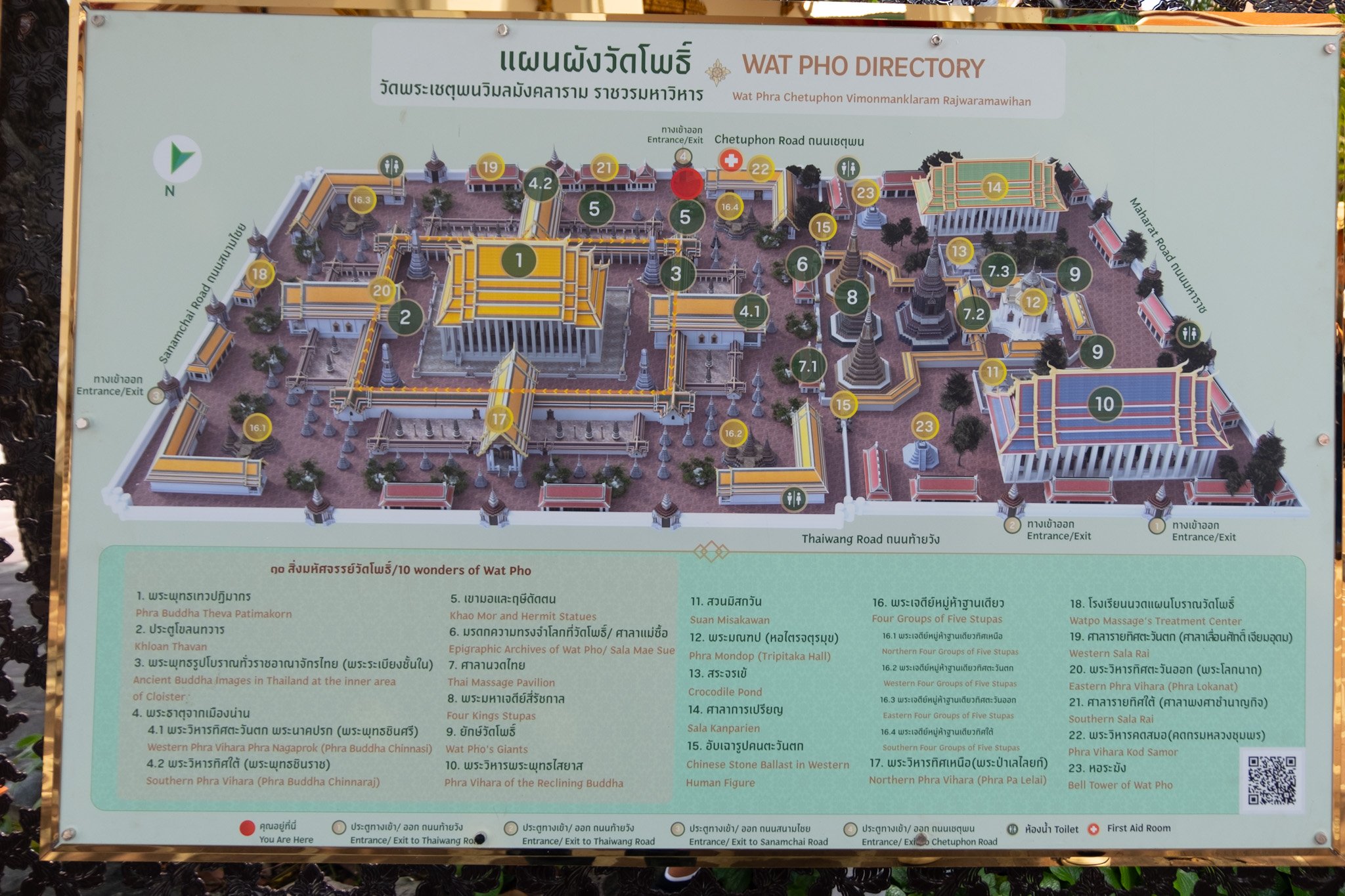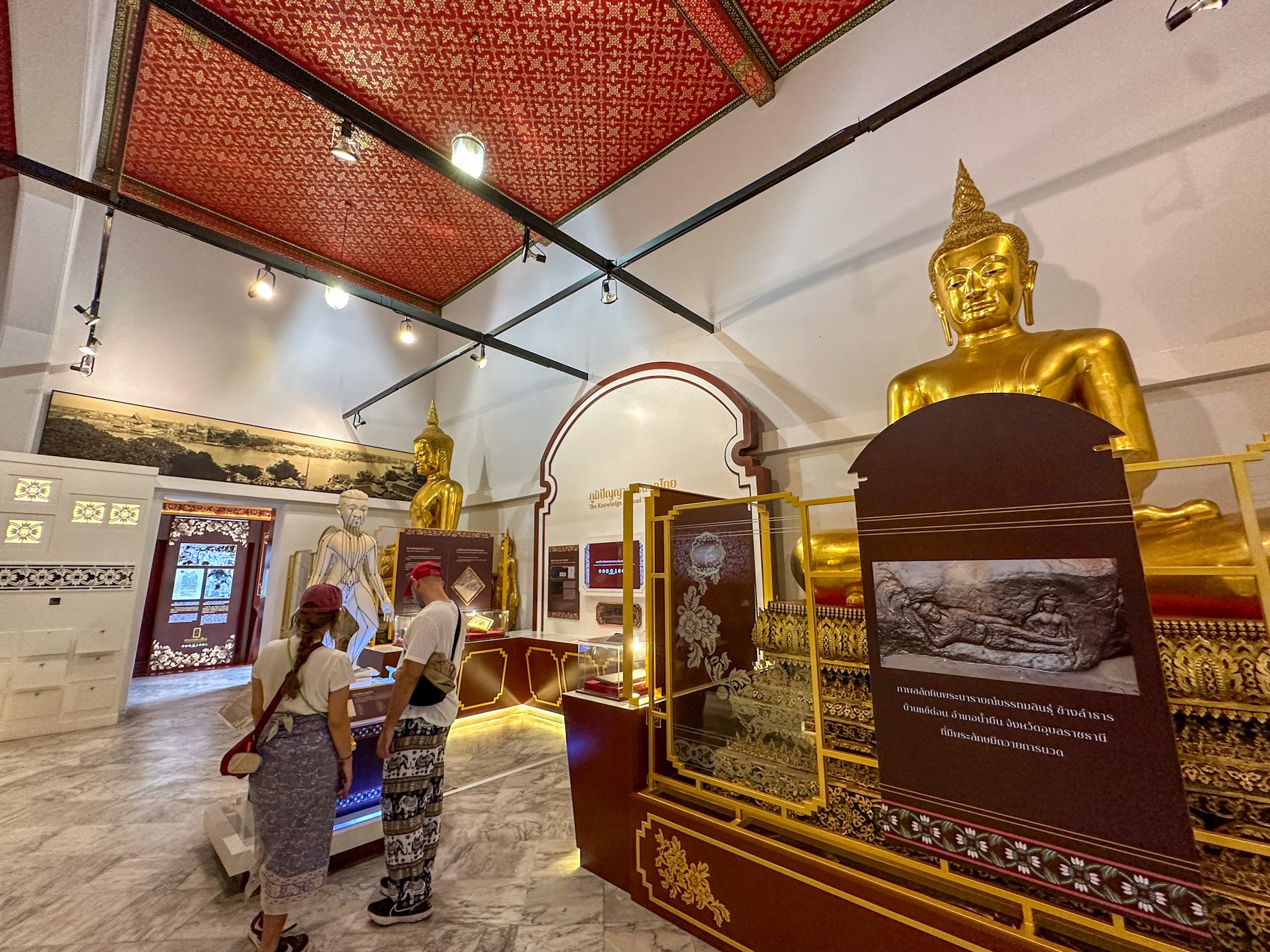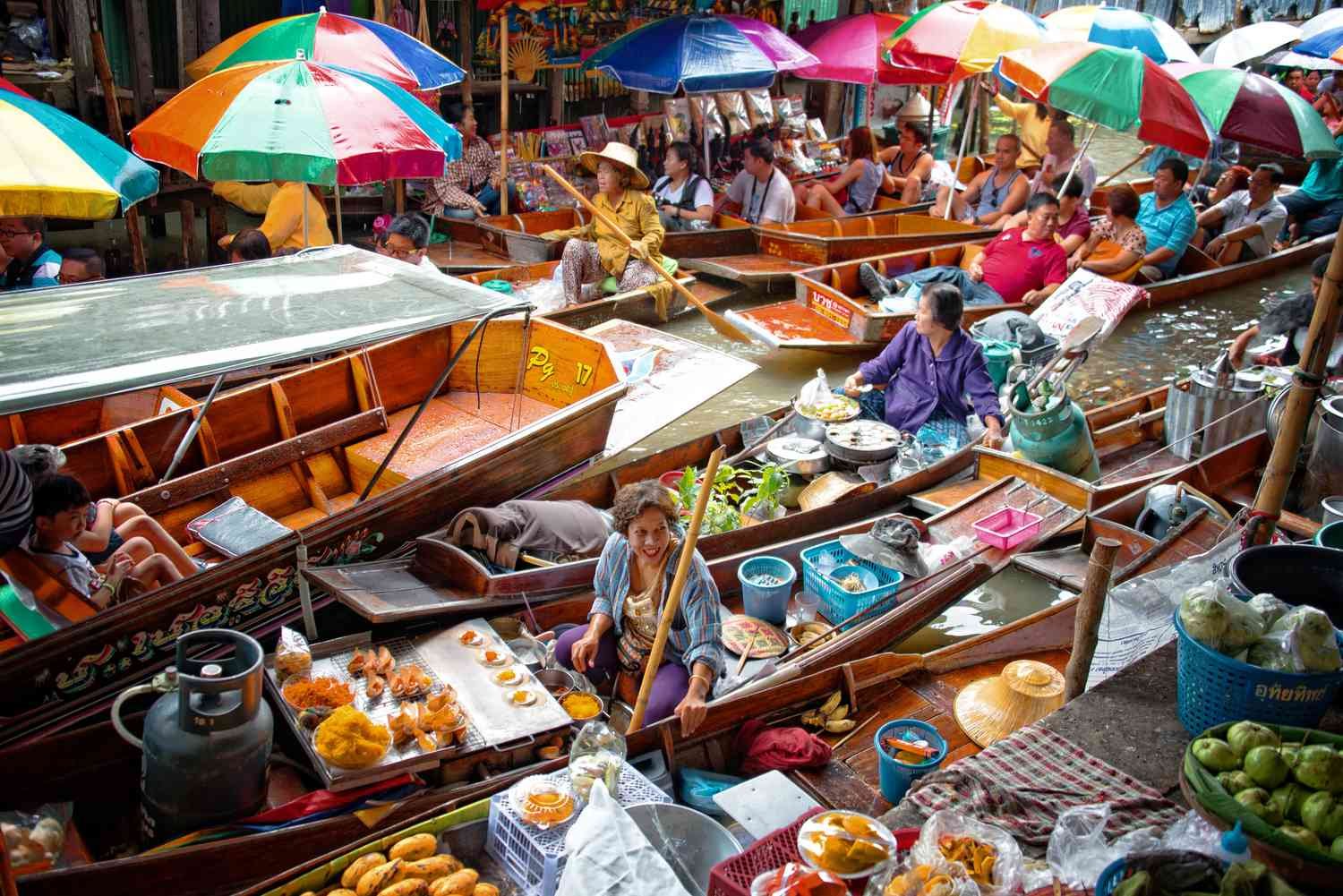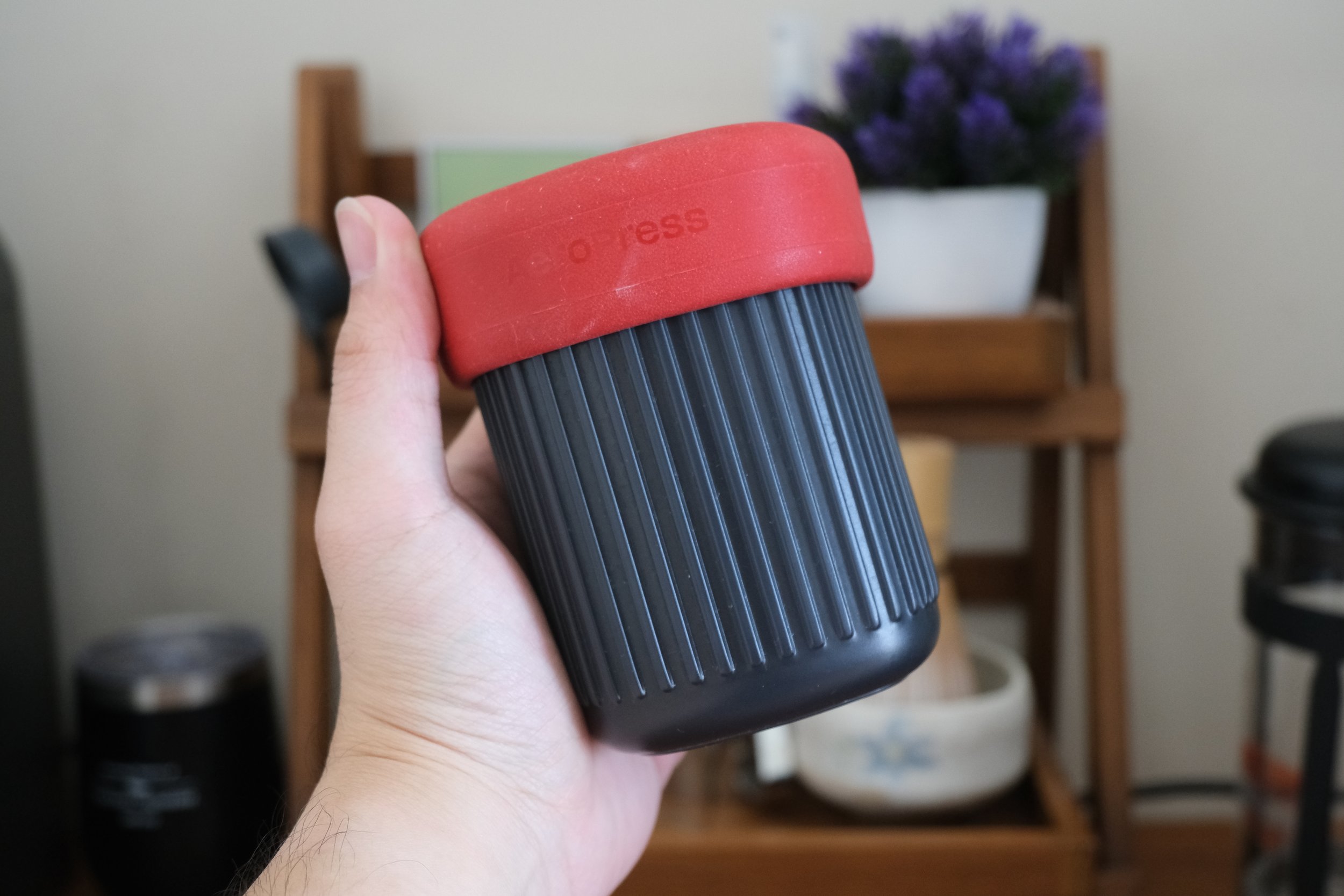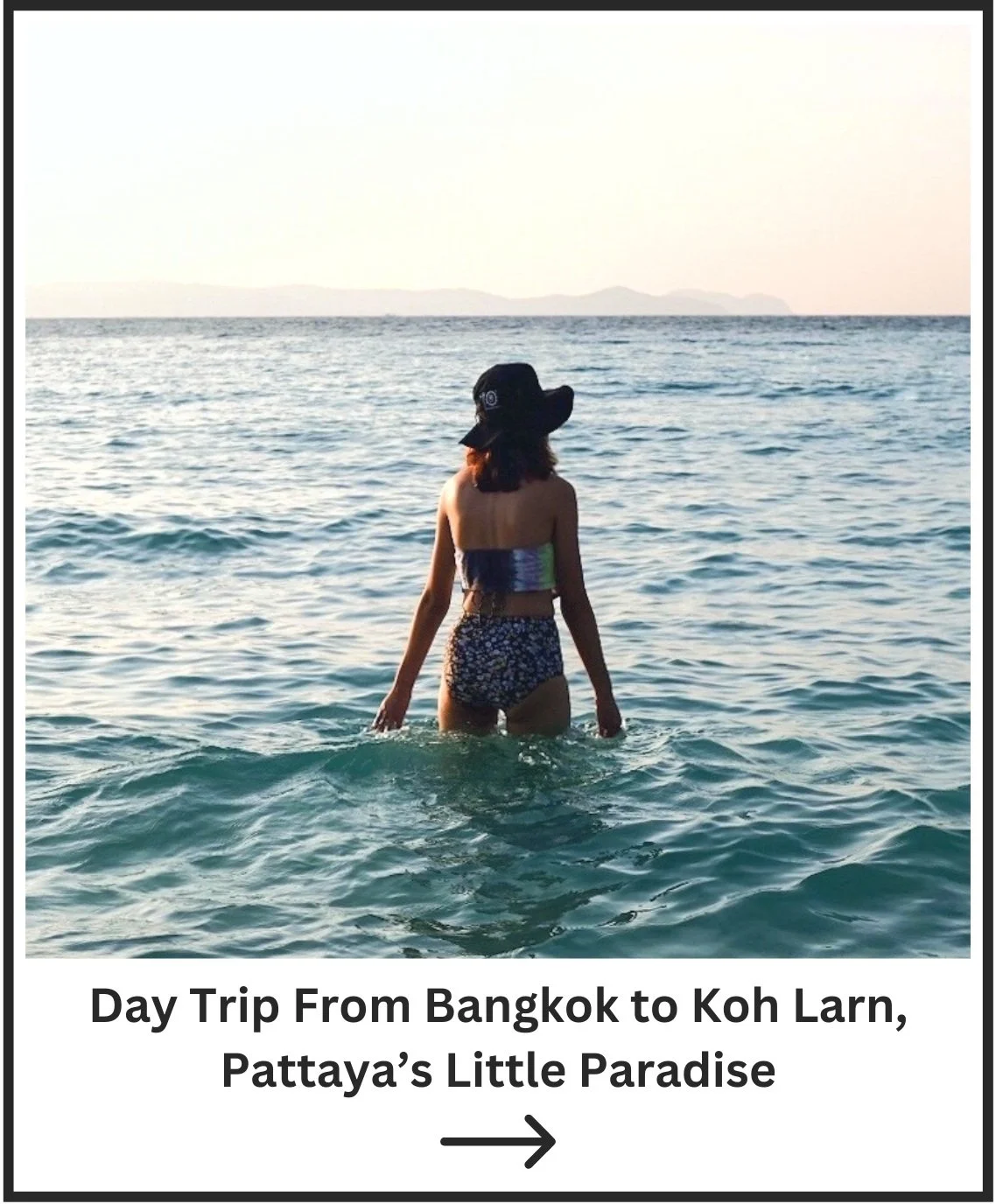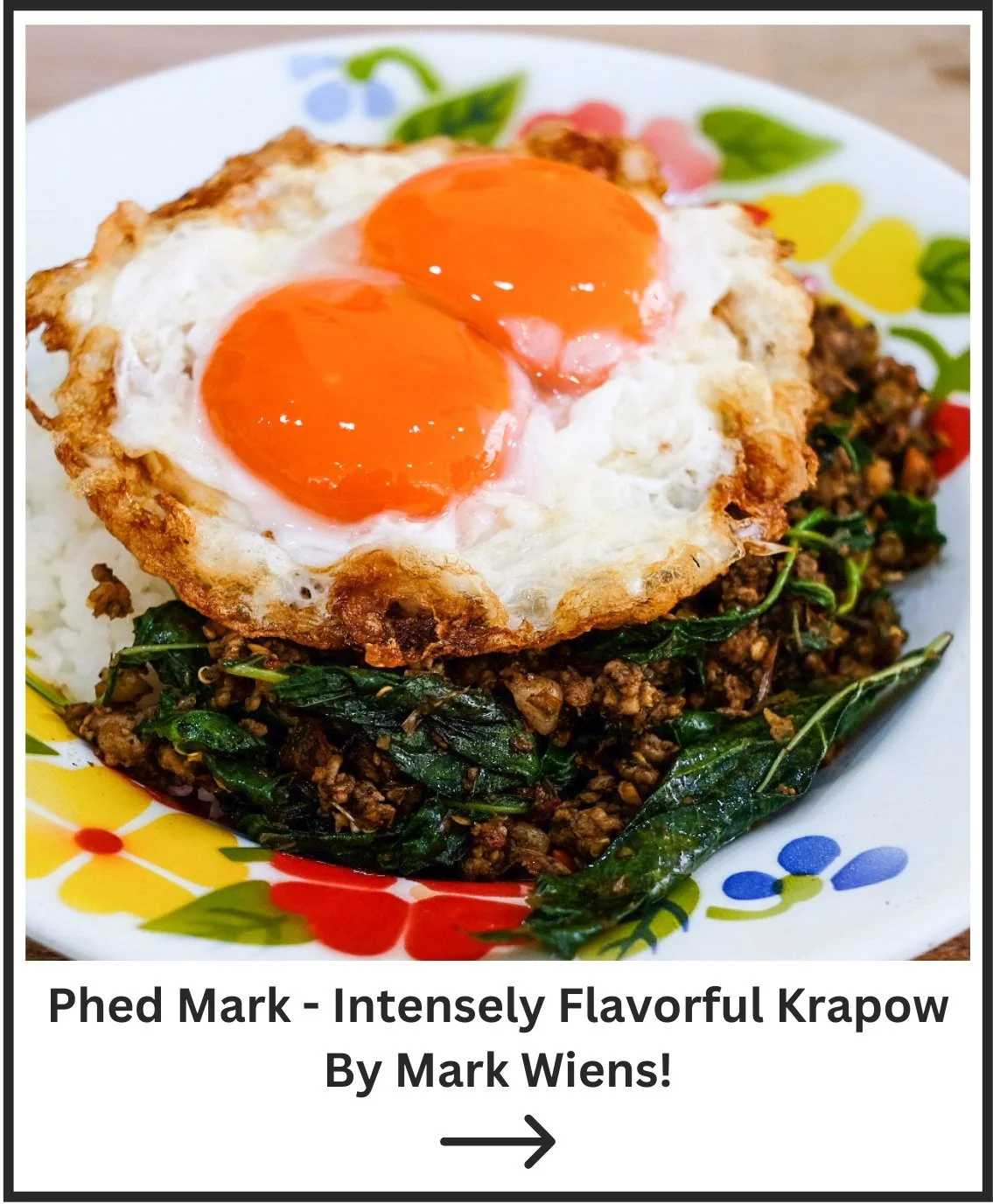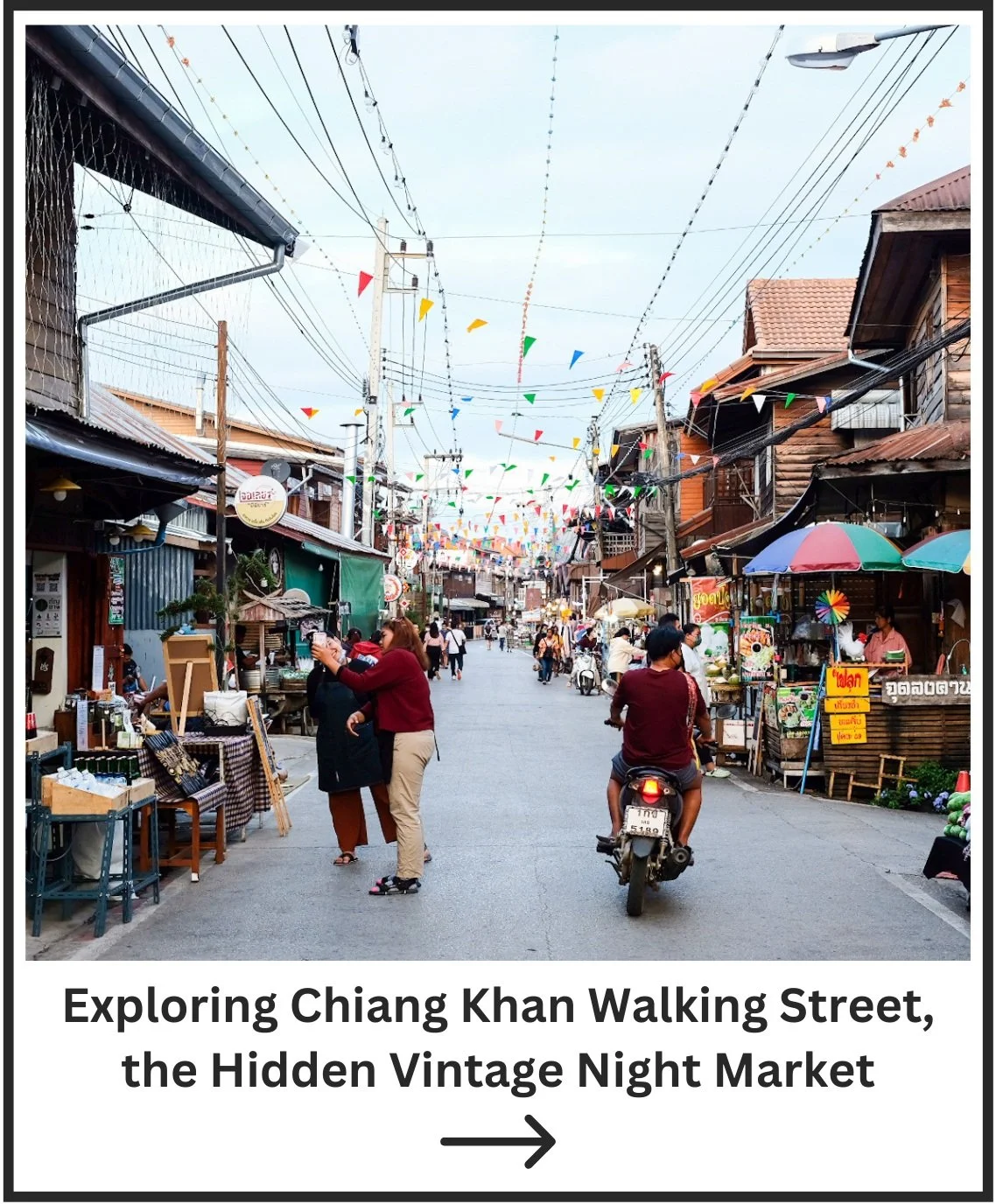Wat Pho in Bangkok, Exploring the Temple of the Reclining Buddha
Truly a majestic and relaxing Buddha
The Temple of the Reclining Buddha also known as Wat Pho (or the official name, Wat Phra Chetuphon Wimon Mangkhalaram Rajwaramahawihan) is one of the oldest temples in Bangkok and one of the most important!
Wat Pho is a gorgeous temple housing the largest statue of the Buddha that I have ever seen! Covering an area of 80,000 square meters. Wat Pho actually holds the classification of being the first of a list of first-class royal temples in Thailand!
Believe it or not, as a local, this is actually my first time visiting Wat Pho and seeing the giant reclining Buddha with my own eyes, plus Wat Pho is known as the birth place of the Thai massage so that’s fun to learn about (and experience)!
So come join me as I explore Wat Pho and discover all the amazing history and secrets within this famous temple!
Affiliate Disclaimer: This page contains affiliate links. By clicking on the links and purchasing the product, I will receive a partial commission at no cost to you. All of these products are ones that I fully trust and recommend with my heart. Thank you for your support!
The Long History of Wat Pho
Don’t mind me, just taking a photo of this beautiful temple
Let me share with you a little bit of history about Wat Pho before we start exploring. Wat Pho, originally named Wat Photharam, is one of the oldest temples in Bangkok and it existed even before Bangkok was officially recognized as the capital of Thailand, back when the capital was Ayutthaya (now an ancient historical park) in the 17th century.
In the late 18th century AD, King Rama I founded Bangkok as the capital of Thailand while also expanding and renovating the temple, changing the name to Wat Pho in the process.
King Rama III later expanded Wat Pho even further to include Thailand’s first ever university as well as establishing Wat Pho as the center for Thai medicine and massage practices.
To this day the legacy of Wat Pho lives on and the temple is known as the birth place of the Thai massage, There are still schools in Wat Pho where you can learn how to do Thai massages yourself, I’ll talk amore about this later in the blog post :)
Wat Pho Entrance Fee and Tickets
Sorry for the gloomy vibes, the weather was not on my side that day…
Just like every other major temples in Bangkok you’ll have to purchase a ticket to enter the Wat Pho temple grounds and to witness the glorious reclining Buddha.
And like every other tourist attraction in Bangkok, unfortunately foreigners and tourists will have to pay more than locals. The Wat Pho entrance fee is:
300 THB - For foreigners and tourists
Free Entry - For local Thais
Unlike some of the other temples in Bangkok (for example Wat Saket), where you can explore the temple grounds for free, the entirety of Wat Pho is locked behind a 300 THB entry fee…
If you are looking for an all in one tour exploring the major temples in Bangkok such as the Grand Palace, Wat Arun, Wat Pho, and Wat Phra Kaew, then I highly recommend you book a tour such as this Bangkok Temple Tour which will bring you to all 4 of the above temples as well including a nice cruise along the Chao Phraya river.
Important Thai Temple Etiquette!
Somebody left their trolly here
If you’ve been in Thailand long enough (or have done your research) you know the drill, but if you didn’t know, there are some simple rules and etiquettes that you need to respect before even stepping into a Thai temple. The 2 most important ones are:
Take off your shoes - Some areas require you to take off your shoes, to avoid dirty-ing the area.
Dress modestly - This goes especially for women (for men too), Temples are a sacred place so ensure that your shoulders and legs are covered by wearing either long pants or a long skirt.
Other than that, it’s just basic common decency, don’t go around causing trouble, annoying the locals, disturbing monks, and some places even banned selfie sticks.
There’s a lot more little things that you might not know about Thailand’s culture so if you would like to know more I’ve written this handy little blog post detailing 50 Tips and Things to Know About Thailand before visiting.
Let's Explore Wat Pho!
The map is handy, though it may look overwhelming, Wat Pho is actually easy to explore
Around the Wat Pho temple complex are a bunch of maps which is very helpful for exploring. There are literally dozens of points of interests but I’d say there are only a handful which are must-see places, the others are minor or something that you can encounter as you walk.
There are tour guides that you can hire for a couple hundred THBs if you are afraid to get lost or want to learn a bit more about the history and background to some of the locations, but I think following the map is easy enough.
The World Famous Reclining Buddha of Wat Pho
The scale of the Buddha is so large, I can’t fit his entire body into frame
My first stop is of course the world famous reclining Buddha located within the Viharn Phranorn building. Stretching for a whopping 46 meters, this 15 meter tall reclining Buddha statue is truly magnificent, my photos could not capture the scale and awe of the statue.
Constructed in 1848 by King Rama III, The Reclining Buddha isn’t built out of pure gold mind you, though it may look like that, in actuality the statue is built using bricks and then layered with a coating of gold leaf. Nevertheless, you can’t deny that the statue is pretty awesome and awe-inspiring.
The structure of the Viharn Phranorn building itself is solely dedicated to housing the reclining Buddha, though the pillars supporting the roofs does make it difficult to take pictures of the entire Buddha statue. Plus the huge crowds make it very difficult to walk through.
The intricate details on the feet is so impressive
While the reclining Buddha himself is magnificent, his feet are also interesting, I know that sounds weird but trust me I don’t have any feet fetishes…
The soles of the Buddha’s feet are lined with Nacre (Mother of Pearl), a type of crystalized mineral found in seashells. The Buddha’s soles are decorated with symbols such as flowers, elephants, and so on, in the middle of each foot is a circle representing the Chakra, a focus point of energy within the body.
I’m not exactly sure of the meaning of these symbols but the carvings and symbols are impressive to marvel at.
Don’t steal from these bowls… Yes, people do steal…
One feature that many people overlook are the 108 bronze bowls lined along the walls of the building located behind the reclining Buddha statue. You can drop a coin into each of these bowls and it is said to bring you good fortune.
Also it’s a way for you to donate your hard earned dollarydoos for the monks to help them maintain the Wat Pho temple complex.
It’s optional of course, but it’s nice to help out.
Pagodas of Wat Pho and the Phra Maha Chedi Si Rajakarn
These chedis are so tall, it feels like they cut through the clouds
Another major point of interest in Wat Pho are the various pagodas, known as Chedi which are located around the temple complex.
The smaller Chedis are called Phra Chedi Rai, these are about 5 meters tall and are dotted all around the Main Wat Pho temple building and housed the ashes of various individuals of the royal family as well as certain relics of the Buddha.
It’s actually kind of creepy knowing that these small, rather unassuming Chedis are housing pieces of ancient history inside of them. I actually learnt about this fact later on, so I walk past these smaller chedis without even batting an eye.
Just admire the intricate mosaics on these pagodas!
Though the smaller chedis cant’ compare to the larger ones known as the Phra Maha Chedi Si Rajakarn, a group of 4, 42 meter tall Chedis which are dedicated to the first 4 Kings of the Thai Royal Chakri Dynasty.
You’ll noticed that each of the 4 Chedis are coated in different color mosaic tiles, these each have different meanings:
The Green Chedi - Houses the remains of the Great Buddha as well as ashes of King Rama I
The White Chedi - Housing the ashes of King Rama II
The Yellow Chedi - Housing the ashes of King Rama III
The Blue Chedi - Housing the ashes of King Rama IV
Lanka Bodhi (Pho Tree)
What an impressive piece of wood!
Next to the building that houses the reclining Buddha is the Lanka Bodhi Tree, which is an interesting little relic of Ancient Buddhism.
The Bodhi tree here is a descendant of the original Bodhi Tree in India where the Buddha sat under and obtained enlightenment. A little interesting point of interest.
Phra Ubosot, The Main Wat Pho Temple Building
The tall white pillars makes the Phra Ubosot look very imposing
The actual main part of Wat Pho is the Phra Ubosot, the ordination hall where the main buddhist rituals are held.
The Phra Ubosot sits on a marble platform and the design is quite interesting, to me at least. As it boasts a similar design language to say, the Greek Parthenon, with its usage of support columns. That’s not to say the ancient Siamese copied the design, but it’s just fun to think that this is Thailand’s version of the Parthenon.
It looks like the monks are about to conduct a ritual
Anyways, inside the Phra Ubosot is where you can find a gold and crystal decorated statue of the Buddha known as Phra Buddha Theva Patimakorn. We don’t really know where this statue came from but it’s believed to be relocated to Wat Pho by King Rama I during the Ayutthaya period of Thai history.
Nevertheless, this particular Buddha statue signifies authority indicated by the nine tiered golden umbrella on top of the statue, an iconic image of Thai royalty.
You can enter the Phra Ubosot but be prepared to wait in line for a loooooong time. As there are lots of tourists. I went on a Wednesday and during the rainy season (low season for travel in Thailand) and even then Wat Pho was packed with travelers.
About 400 of these beautiful statues line the walls of Wat Pho
The Phra Ubosot is surrounded by walls, in these walls you can find about 400 statues of the Buddha image. These are actually historical pieces from different eras of Thailand’s history, some even dating back to the beginning of the country of Siam.
Nowadays, these statues look almost brand new, that’s because a lot of them were renovated by King Rama I and decorated with layers of gold leaf to make them look similar to each other.
It’s actually quite interesting to see how the designs of the Buddha image have evolved over the years.
The World Famous Wat Pho Massage
Spooky man with his chakras over there
Alright, we’ve finally come to the world famous Thai massage! Thai massage had existed in Thailand for a long while now, ever since the early 13th century, however it was only limited to royalty or people with a lot of money to splurge on these things.
When King Rama I renovated Wat Pho, he made it so that the temple would be a center for the education and preservation of Thai Massage. literary records, teachings, and herbal supplies would all be kept and displayed in Wat Pho.
It would be later during the reign of King Rama III, that the Thai Massage would become more accessible to the public, allowing anyone to visit Wat Pho and learn about the intricacies of the Thai Massage.
Gradually, the Thai Massage would spread throughout the country with many schools opening to teach students about this craft. Post World War 2, seeing the increase in local AND global demand, the then current King Rama IX encouraged the famous Chetawan Wat Pho Thai Massage School to continue providing their educational courses as well as perfecting their craftsmanship.
Exploring the Wat Pho Massage Museum
I really want a foot massage right about now
The Wat Pho Massage Museum is a small little museum that’s actuall quite easy to miss if you aren’t looking for it. I would’ve walked past it if I hadn’t noticed the creepy decoration of the human anatomy stuck in front of the wall outside.
Inside is a room full of tidbits of information as well as some historical artifacts and herbs on display for you to learn about. I wouldn’t say it’s a must-visit point of interest, but it is certainly interesting for those of you who like history.
It’s also worth mentioning how important Thai Massage in terms of our world’s culture and history. So much so that it’s been included in the UNESCO's list of Intangible Cultural Heritage.
The Medical School of Massage
If blogging doesn’t work out for me, I might just become a masseur
Here is where things are more interesting, within Wat Pho there are 2 medical schools of massage, here is where you can enroll in a course to practice the Thai massage, or enjoy the Thai massage yourself.
There are different types of courses, from multi-day short courses that focus on a specific part of the body like the face, body, or feet. Then there are professional courses that span multiple weeks where you learn all the ins and outs of how to become a professional masseuse/masseur.
The prices for these courses range from 13,500 THB to 40,000++ THB.
There are also short 2-3 hour workshops for you to get a little taste of the profession, these go for around 2,000 THB. Unfortunately I didn’t have the time to do these workshops but I think it would be a great family activity if you are on holiday.
For more details and a full list of courses and prices check out the official website: www.watpomassage.com
Details About Wat Pho
Even the Pope had visited Wat Pho! Maybe it’s time you did too!
Wat Pho is the famous Temple of the Reclining Buddha in Thailand. One of the oldest and most important temples in Bangkok dating back to the 17th century. There are lot of tourists here so be prepared for a large crowd.
Phone: +66 83 057 7100
Location: 2 Sanam Chai Rd, Phra Borom Maha Ratchawang, Phra Nakhon, Bangkok 10200
Entrance Fee: 300 THB for Foreigners | Free for Locals
Opening Hours: 8:00 AM - 7:30 PM | Mon - Sun
How to get to Wat Pho
Getting to Wat Pho is actually quite convenient. You can either take a taxi, or the MRT (underground metro). I went there via MRT.
For the MRT, you’ll want to take the Blue Line towards Lak Song, and you’ll want to get off at Sanam Chai Station. Upon leaving the station you’ll pop out at the Museum of Siam, from there it’s just a 7 minute walk to Wat Pho.
For taxis, Just tell your driver you’re heading to Wat Pho the price depends on where your starting destination is but expect to pay around 200 THB.
I do not recommend taking a TukTuk, they’re known to scam tourists by saying that these major temples and attractions and they’ll bring you to some other place where they can get commissions. Plus they often overcharge tourists.
Hotels and Accommodations Around Wat Pho
Wat Pho is located in the old district of Bangkok, near Khao San Road and Yaowarat Chinatown etc… A lot of the accommodations in this area are hostels or budget friendly hotels. Some hotels I recommend are:
CORRIDOR 2407 - A modern and stylish hotel located near the MRT
Phra Nakhon Poshtel - A comfortable and cozy hotel in the old area of Chareonkrung
RALPH Bangkok - A budget friendly hotel/hostel with a minimal design
If you are looking for hostels you can check out some of the Best Hostels in Bangkok.
Looking for Things to Do in Bangkok?
SEA LIFE Bangkok Ocean World - Encounter over 400 marine species and 30000 creatures
Floating Markets Day Tour - Tour 3 major markets: Damnoen Saduak, Maeklong, Amphawa
Safari World Bangkok - Meet exotic and friendly animals at Bangkok’s animal kingdom
Discounted Tickets - Browse a variety of attractions, tours, and transports all for a great price
Useful Resources for Traveling in Thailand
Tourism Information - All the information you need when traveling in Thailand
4G/5G SIM Card - 8 days, 15GB, Important for staying connected while in Thailand
Private Airport Transfers - Transfer from Suvarnabhumi Airport to the city without worry
Best Bangkok Hostels - A list of the best hostels to stay for cheap and meet new friends






